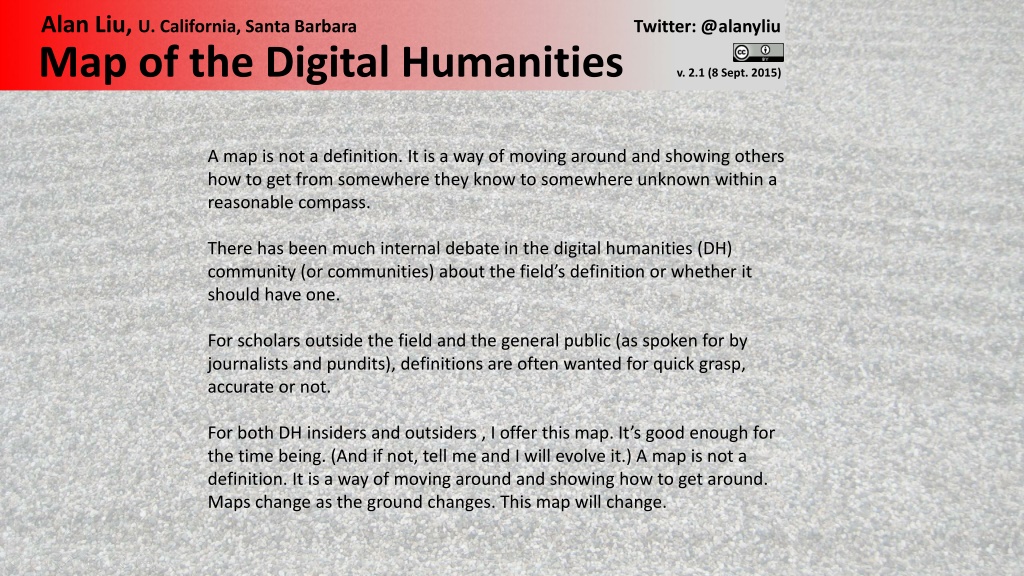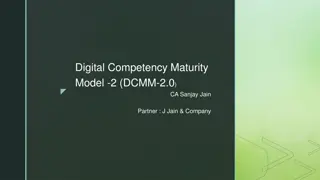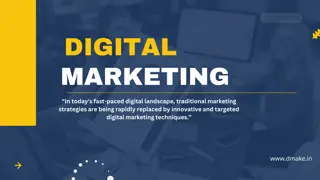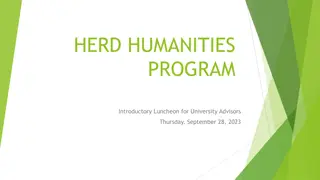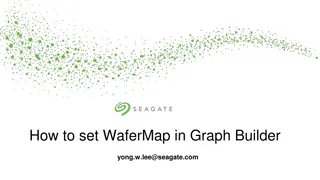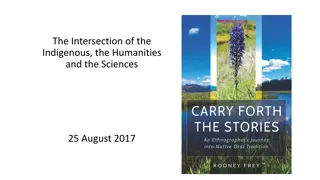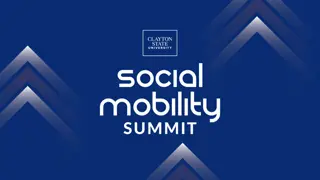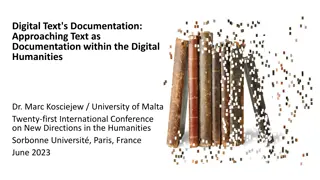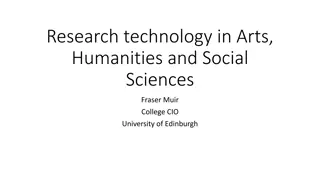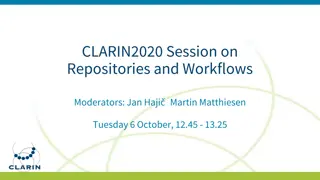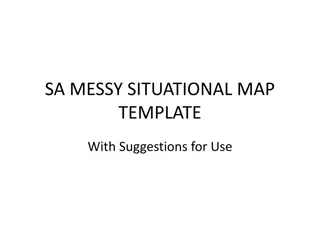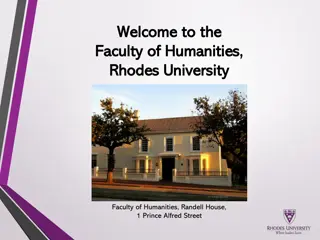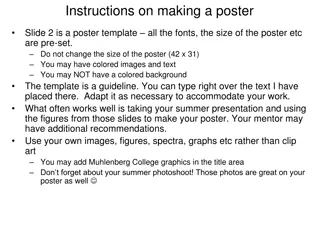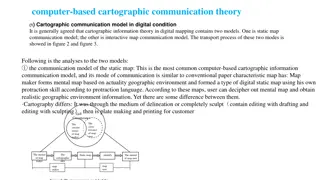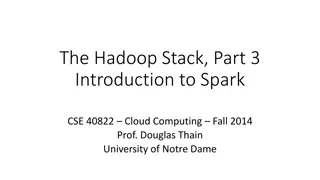Map of the Digital Humanities
A detailed exploration of the evolving landscape of digital humanities, encompassing its history, key concepts, and intersections with new media studies. Delve into the genus and species concepts, highlighting the diverse scholarly approaches within this field. Discover the map that guides researchers through this dynamic and interdisciplinary realm.
Uploaded on Mar 09, 2025 | 0 Views
Download Presentation

Please find below an Image/Link to download the presentation.
The content on the website is provided AS IS for your information and personal use only. It may not be sold, licensed, or shared on other websites without obtaining consent from the author.If you encounter any issues during the download, it is possible that the publisher has removed the file from their server.
You are allowed to download the files provided on this website for personal or commercial use, subject to the condition that they are used lawfully. All files are the property of their respective owners.
The content on the website is provided AS IS for your information and personal use only. It may not be sold, licensed, or shared on other websites without obtaining consent from the author.
E N D
Presentation Transcript
Alan Liu, U. California, Santa Barbara Twitter: @alanyliu Map of the Digital Humanities v. 2.1 (8 Sept. 2015) Creative Commons License A map is not a definition. It is a way of moving around and showing others how to get from somewhere they know to somewhere unknown within a reasonable compass. There has been much internal debate in the digital humanities (DH) community (or communities) about the field s definition or whether it should have one. For scholars outside the field and the general public (as spoken for by journalists and pundits), definitions are often wanted for quick grasp, accurate or not. For both DH insiders and outsiders , I offer this map. It s good enough for the time being. (And if not, tell me and I will evolve it.) A map is not a definition. It is a way of moving around and showing how to get around. Maps change as the ground changes. This map will change.
Alan Liu, U. California, Santa Barbara Twitter: @alanyliu Map of the Digital Humanities v. 2.1 (8 Sept. 2015) Creative Commons License Here s a panoramic view of the overall terrain that could reasonably be called digital humanities in some context institutional, research, or pedagogical. Let s call this the genus concept of the digital humanities.
Alan Liu, U. California, Santa Barbara Twitter: @alanyliu Map of the Digital Humanities v. 2.1 (8 Sept. 2015) Creative Commons License In the last ten years or so, the specific phrase digital humanities has come to stand for one quadrant of the map in particular (blue rectangle). This is the species concept of DH. DH in this sense evolved from an earlier genealogy of humanities computing. It affiliates with the older, core humanities disciplines of history, literature, classics, etc. Often, though not exclusively, it focuses on encoding and analyzing text. It is often considered a mode of reading e.g., a theory and practice of distant reading.
Alan Liu, U. California, Santa Barbara Twitter: @alanyliu Map of the Digital Humanities v. 2.1 (8 Sept. 2015) Creative Commons License DH in the species sense now has its own history, bibliography, programs, journals, and critics. Susan Hockey, "The History of Humanities Computing" (2004) John Unsworth, "What s 'Digital Humanities' and How Did It Get Here?" (2012) Meredith Hindley, "The Rise of the Machines--NEH and the Digital Humanities: The Early Years" (2013) Matthew G. Kirschenbaum, "What is Digital Humanities and What's It Doing in English Departments?" [PDF] (2010) Programs in Digital Humanities Digital Humanities Quarterly Debates in the Digital Humanities Dark Side of the Digital Humanities Etc.
Alan Liu, U. California, Santa Barbara Twitter: @alanyliu Map of the Digital Humanities v. 2.1 (8 Sept. 2015) Creative Commons License The neighboring species is often called new media studies (green rectangle). Its genealogy stems from media studies, digital arts, and design, which are new (and newer) entrants in the humanities. Partly because of the avant-garde and tradition- breaking traditions of those fields, new media studies has often had a stronger emphasis on cultural critique. New media studies also has a stronger focus on contemporary media, including networked, social- networked, and visual media.
Alan Liu, U. California, Santa Barbara Twitter: @alanyliu Map of the Digital Humanities v. 2.1 (8 Sept. 2015) Creative Commons License Individual scholars can span across digital humanities and new media studies, and there is other overlap. (The species metaphor breaks at this point.) But at present there is little formalized communication between DH and new media studies in the way of programs, centers, or even conferences. Someone needs to make a major conference that puts DH and new media studies (including also network critique ) people in the same room together.
Alan Liu, U. California, Santa Barbara Twitter: @alanyliu Map of the Digital Humanities v. 2.1 (8 Sept. 2015) Creative Commons License In the meantime, there are intriguing missing link fields on the map that are de facto land bridges between the continents of DH and new media studies. One conspicuous example is history of the book (purple rectangle). Book history after McLuhan is really a branch of media studies as witnessed in such approaches as material history of the book or ephemera studies. It is a media archaeology that spans between DH and new media studies. Deformance theory in DH, or glitch theory as it is known in new media studies, crosses between too.
Alan Liu, U. California, Santa Barbara Twitter: @alanyliu Map of the Digital Humanities v. 2.1 (8 Sept. 2015) Creative Commons License Finally, there is the broad delta of non-humanities disciplines that the digital humanities draw upon, collaborate with, or find near humanities allies among (yellow rectangle). These include not just the fields of computer science and information science but the digital vanguard in communication, sociology, political science, anthropology, archaeology, geography, and so on.
Alan Liu, U. California, Santa Barbara Twitter: @alanyliu Map of the Digital Humanities v. 2.1 (8 Sept. 2015) Creative Commons License To change metaphors: It takes a village (the narrower sense of digital humanities)... But it also takes a city and a world (the big map of the digital humanities).
Alan Liu, U. California, Santa Barbara Twitter: @alanyliu Map of the Digital Humanities v. 2.1 (8 Sept. 2015) Creative Commons License This is not the last word, or the last map. It will all change. --Alan Goleta, California; 8 September 2015
